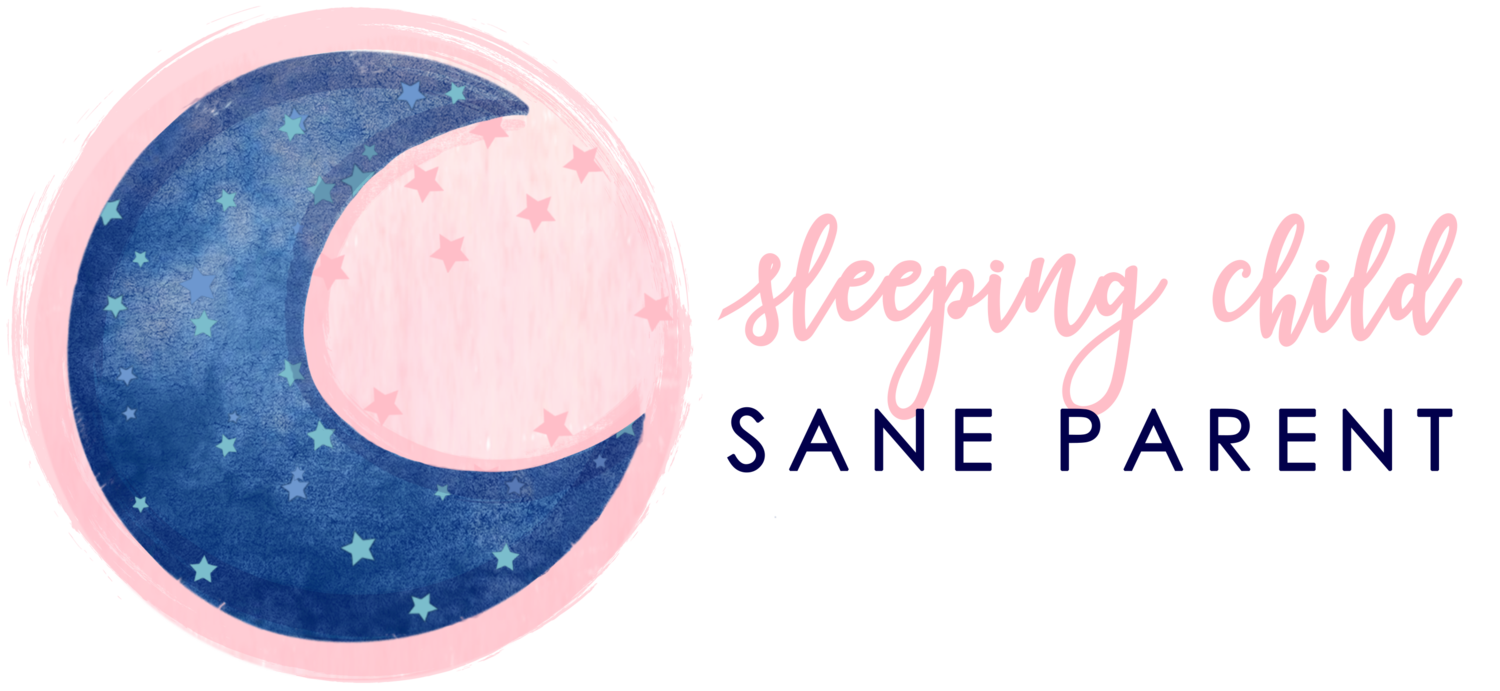The swaddle and the sleep sack are two very important pieces in the sleep puzzle for newborns and older babies. However, it can be confusing trying to figure out when and how to make the transition between the two! Today’s blog is about all things swaddles and sleep sacks so that you feel equipped to use both!
Swaddling: Why, When, and How
Why
Newborn babies tend to crave a swaddle, since they’re used to being crunched up in mom’s belly. Although it seems like it would be very uncomfortable, newborns actually find it familiar and soothing.
Not only that, but newborns also have a strong moro reflex — where their whole body sort of flails randomly. If they’re sleeping and this occurs, it often wakes them up. Swaddling deadens the effects of the moro reflex so that Baby is more likely to sleep through the flails.
When
If you can, start swaddling Baby from day 1. Always lay Baby on her back while swaddled for safe sleep practices, and discontinue swaddling when Baby shows signs of rolling while swaddled, or by 16 weeks (whichever comes first).
How
There are LOTS of ways to swaddle — you can use a stretchy blanket (appropriate for the temperature) or a number of different swaddles that incorporate velcro or zippers, and you can swaddle with arms down or arms bent with the hands up (though babies tend to break out of swaddles more easily if their arms are up). However you swaddle, make sure that the swaddle is tight enough to keep Baby contained and free of loose fabric, but loose enough that it isn’t pushing Baby’s shoulders out of place.
Personally, I prefer SwaddleMe swaddles with the arms down.
Sleep Sacks: Why, When, and How
Why
Sleep sacks are great for a few reasons:
1. It’s a wearable blanket! Since we want to keep loose fabric away from Baby’s face to keep her safe, this is a great way to still give her extra warmth if the weather is cold. (And even if the weather is warm, there are very lightweight sleep sacks you can use for the other benefits!)
2. It’s a great sleep cue. Each part of Baby’s bedtime routine cues her brain to know that sleep is coming. Most people change into pajamas for sleep, which is a big cue for those people that it’s time to sleep. Even though we’re not changing Baby’s clothes every time she sleeps, putting on a sleep sack acts in the same way. Plus, swapping a swaddle for a sleep sack feels like a more subtle transition than swaddle to nothing.
3. For older kids, sleep sacks can prevent diaper painting (yuck!) and crib climbing. Both great things to avoid!
When
Whenever you drop the swaddle, immediately swap it out for a sleep sack. This could be as early as 8 weeks. Then keep the sleep sack as long as you possibly can. I recommend keeping it until you transition Baby into a big kid bed around 3+ years old.
How
There’s no real trick to using a sleep sack — simply get one that fits appropriately and zip it up! You don’t need anything fancy when it comes to sleep sacks, so don’t let the expensive sleep sacks draw you in. Sleep SKILLS make for good sleepers, not sleep PRODUCTS.
For older kids who begin removing their sleep sack, you may need to turn the sack inside out and/or backwards.
How to Keep Baby in the Swaddle Longer
If Baby is starting to roll, it’s time to drop the swaddle. However, if Baby is not yet rolling but regularly breaks out of her swaddle, she may benefit from a little extra swaddling. We don’t want Baby waking up because of the moro reflex if she doesn’t have to!
One way to try to keep the swaddle a little longer is to (1) get an extra (lightweight) blanket and lay it under baby before swaddling. (2) Bring one side over one arm, and then (3) tuck the blanket under Baby’s body, pinning the arm to the side, but not pulling the shoulders back uncomfortably. (4) Repeat on the other side. Then use your normal swaddle on top of this. Make sure Baby won’t overheat by using lightweight blankets and swaddles, as well as fans if necessary.
Here that process is in picture form (thanks to my almost 5-year-old model! hahaha):
Should I Use a Transitional Tool like a Sleep Suit?
Short answer - no. Transitional sleep suits are not worth the money because they’re used so briefly, if at all. We want Baby to transition right into a sleep sack so she can begin to experiment with moving her body (body movement is inhibited by a sleep suit!). Babies use their bodies in all sorts of ways for self-soothing, and we want Baby to begin learning self-soothing skills as soon as she can.
When and How to Make the Transition to the Sleep Sack
Again, this transition may happen anytime between about 8 and 16 weeks, but we definitely want to transition out of the swaddle at any sign of rolling, or when we’re ready to sleep train at 16+ weeks (whichever comes first!).
Some parents feel more comfortable with a slower transition, where they start with one arm out of the swaddle, move to both arms out, and eventually switch over to the sleep sack. However, I’m not usually a fan of slow transitions, so I simply swaddle one day, and use a sleep sack the next! It’s an adjustment like any other, which means there may be some crying as Baby navigates the change, but Baby will quickly adapt.
Hopefully that clears up any questions you have about swaddles and sleep sacks, but if you have any other questions, feel free to drop them in the comments!






